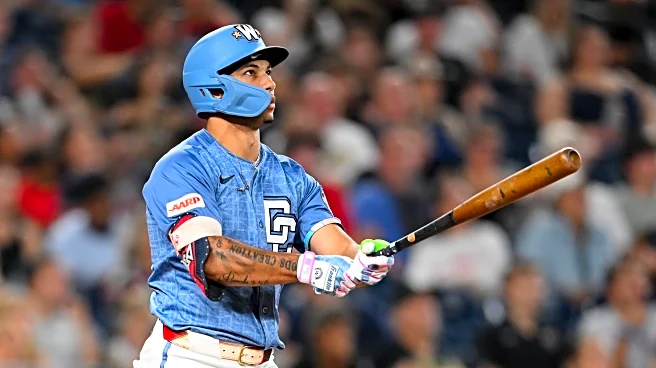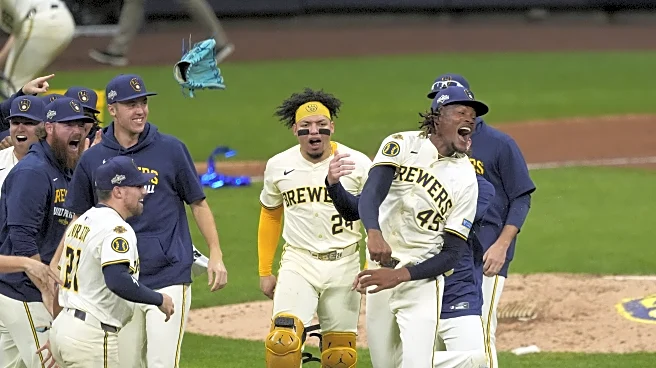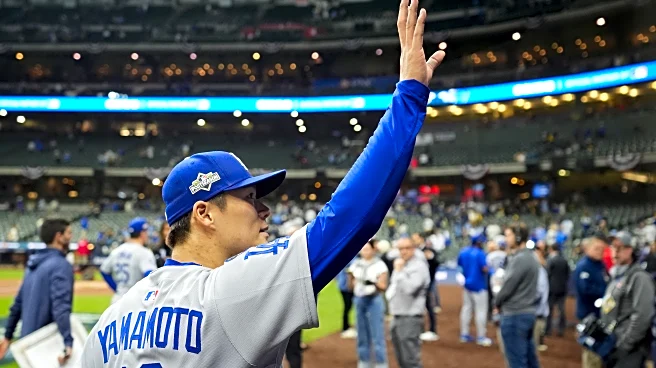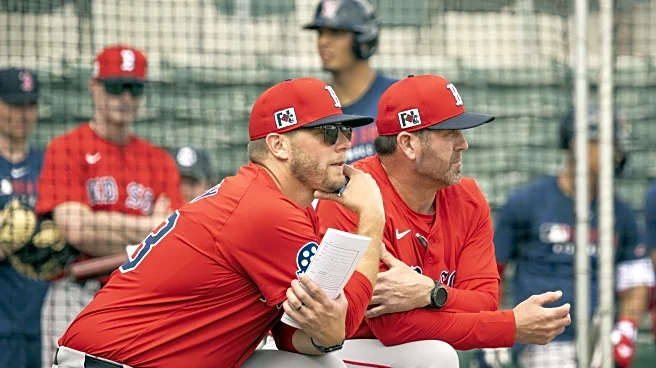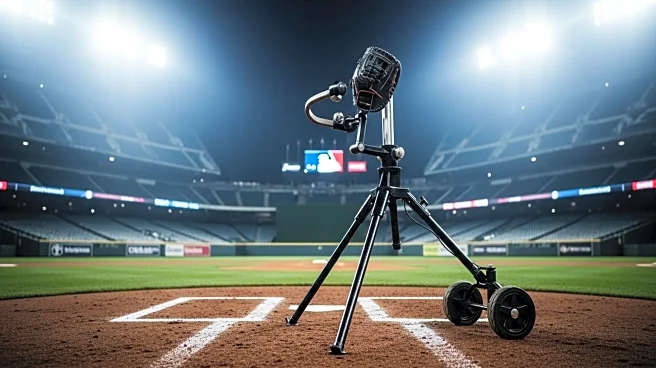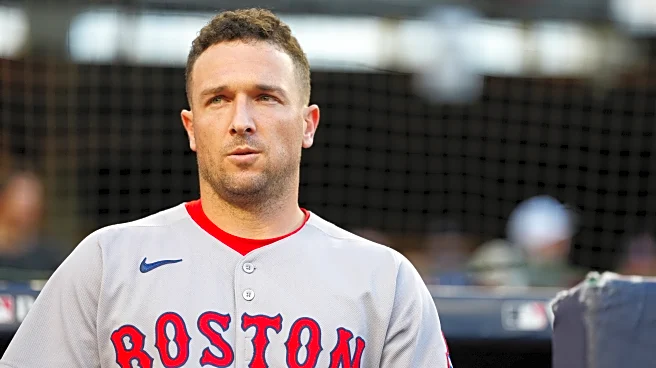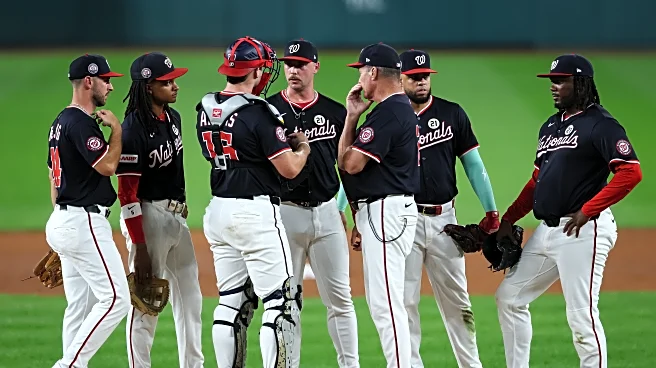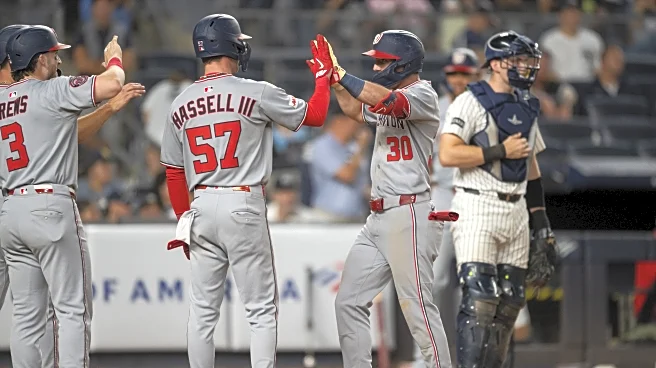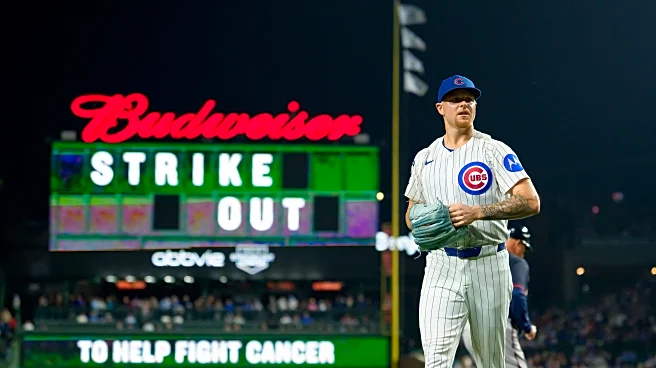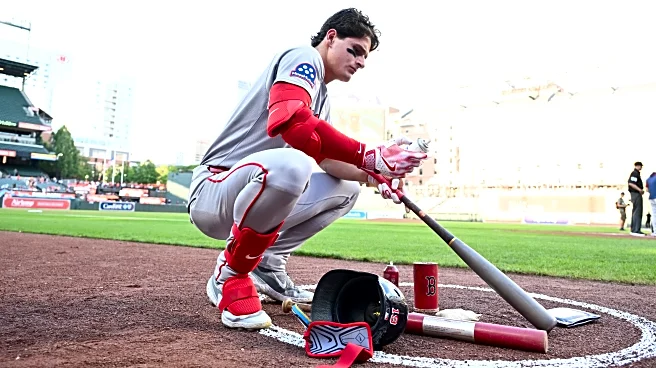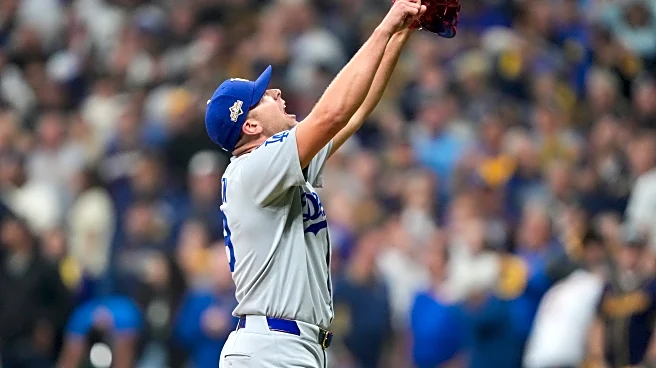Extending young stars is not something the Nationals organization has done very successfully in its history, with countless homegrown stars such as Bryce Harper, Juan Soto, Anthony Rendon, and Trea Turner
eventually leaving via free agency or being traded before their contracts with the club could run out. There has been some success stories, such as Ryan Zimmerman and Stephen Strasburg remaining Nats for life, but over the past decade or so, the struggle has been real to keep young talent around past arbitration.
New president of baseball operations Paul Toboni seems unlikely to spend large amounts on free agents this offseason, as the Nats are not quite contention-ready, but he could do so to keep a current National on the roster around for a long time. Toboni’s Red Sox were no strangers to extending youngsters in 2025, giving $190 million combined to Kristian Campbell and Roman Anthony, both in their rookie seasons. With a plethora of youngsters on the Nats roster, from unproven ones like Brady House to blossoming stars like James Wood, Toboni has plenty of options if he’d like to secure a young Nats future and please the fanbase.
Based on the Red Sox’s history of extensions, the two most likely candidates for extension on the Nats roster are James Wood and Daylen Lile, players with lots of service time still who have proven their worth in the big leagues. While a Wood extension would be a major success for a franchise that has seen plenty of young phenoms walk away, it would also be incredibly difficult to pull off due to Wood’s price already being sky high and his agent being Scott Boras, who pushes practically all his clients to test free agency and get the biggest signing number possible. For that reason, let’s take a look at roughly how much it would take to secure Daylen Lile’s future as a Nat.
First, it’s important to note there is generally 2 types of pre-arbitration extension; one that buys out the players arbitration years and about 1-3 years of free agency, lile Keibert Ruiz received, and one that ties a player to a club for 10+ years, practically guarenteeing they spend their entire career with the team, such as what Bobby Witt Jr received. The latter half contract is generally reserved for the best of the best when it comes to young stars, with players such as Fernando Tatis Jr, Bobby Witt Jr, and Julio Rodriguez being the only ones to sign such lucrative contracts in recent history. A 10+ year extension would likely be what it takes to keep Wood in DC, but in Lile’s case, a contract extension in the 6-8 year range seems most likely, buying out somewhere between 1-3 years of free agency.
Notable Pre-Arbitration Extensions
Lawrence Butler: 7 years, $65.5 million ($9.3 million AAV)
Jackson Chourio: 8 years, $82 million ($10.25 million AAV)
Ezequiel Tovar: 7 years, $63.5 million ($9.1 million AAV)
Ceddanne Rafaela: 8 years, $50 million ($6.25 million AAV)
When comparing Lile’s numbers to those of young players who have already received extensions, it’s important to remember the sample size of games played before the extension was given. While Lile’s numbers pace-wise may be similar to Jackson Merrill’s, Merrill had a full season of games to judge off, unlike Lile, who only has 91, with even less than that being after his second call-up when he truly found his stride.
Perhaps the best comp for a possible Daylen Lile extension is outfielder Lawrence Butler, who, after posting a 130 wRC+ and 3.1 fWAR as a 23-year-old for the Athletics in 2024, signed a 7-year, $65.5 million extension with them, coming out to an AAV of roughly $9.3 million. The sample size and fWAR are larger for Butler, but based on their bats alone, Lile’s 2025 and Butler’s 2024 were not too dissimilar, with Lile even surpassing him in many ways.
So if Butler, who was on 4 fWAR and 25+ home run pace as a 23-year-old, signed for $9.3 million per year, what could Lile, who was one of the best hitters in baseball for the final 2 months of his rookie year as a 22-year-old, receive in an extension? Assuming it’s a 7-year contract like the one Butler signed, which would buy out 2 years of free agency for Lile, somewhere in the $8 million to $11 million range seems the most likely. Contract extensions are not an art, and thus the opinions of both the team, Lile’s agent, and Lile himself on his worth will vary, but based on his performance and the recent history of pre-arbitration extensions in the league, his price would seemingly be around that range.
While locking up a youngster now to only avoid a few years of free agency seems like a frivolous act now, it can pay big dividends down the line in multiple ways. For starters, by paying Lile more now in his early service years while the team’s payroll is low, you save yourself big time later down the line when his contract would be most expensive and the team’s payroll has likely risen. Rather than paying Lile nearly $20 million in his final years of arbitration and having to worry about losing him to free agency, they would be paying him nearly half of that while also having him for a few more years than they would have with no extension.
Another underrated aspect of extending young stars early is avoiding going through the drama of arbitration with them. Teams often can hurt their relationship with their star players by penny pinching them in the arbitration process, such as the Braves did to Max Fried and the Brewers did to Corbin Burnes, in order to save less than half a million each. This can come into play big time when a player finally does reach free agency and now weighs their old club, which did them dirty in the past, against the 29 other clubs in the league. By extending Lile now, the hassle of arbitration is avoided, and the club’s relationship with him remains much stronger as they contend to keep him around past his extension.
To conclude, while extending any of the young Nats’ core would be a major organizational win, I believe, based on Toboni’s history with the Red Sox, that a Lile extension is the most achievable, and perhaps the most savvy one they could make. Even if Lile regresses somewhat entering 2026, he remains likely to stay a quality ballplayer based on the performance and underlying metrics from 2025, and would still be a fan favorite no matter what. If Lile takes the next step towards superstardom in 2026, the organization looks smart for locking him up before the price skyrockets, and Lile joins James Wood and CJ Abrams as one of the faces of the Nats as they escape the rebuild. If Toboni wants to make a splash in his debut winter with the Nats and put a fanbase antsy for some spending at ease, locking up a young star like Daylen Lile may be the best way to do so.
